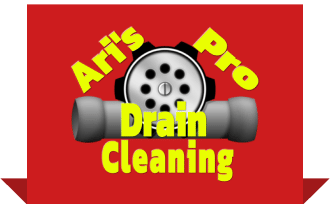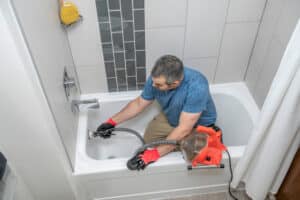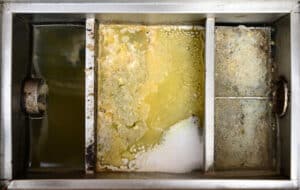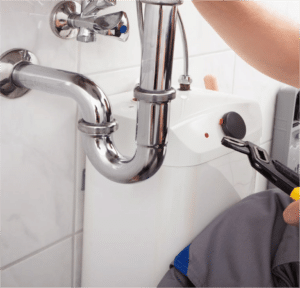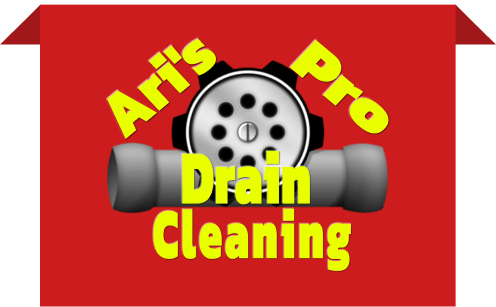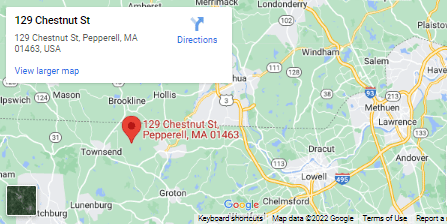Introduction
Grease traps play a crucial role in commercial kitchens and food service establishments by preventing fats, oils, and grease (FOG) from entering the plumbing system. However, without proper maintenance and regular cleaning, these grease traps can become clogged, leading to costly repairs and potential health hazards. In this article, we will discuss effective techniques for maintaining and cleaning grease traps, ensuring their optimal functionality and longevity.
1. Understanding Grease Traps
Before delving into maintenance and cleaning techniques, it’s essential to have a basic understanding of how grease traps work. Grease traps are plumbing devices designed to intercept FOG and solids, preventing them from entering the sewer system. They consist of a tank divided into two or more compartments, where FOG separates from wastewater, allowing the cleaner water to flow out.
2. Regular Inspection
To ensure the proper functioning of a grease trap, regular inspections are vital. Inspect the trap at least once a month, checking for any signs of damage, leaks, or excessive buildup. Look for indications of foul odors, slow drainage, or overflow. Additionally, inspect the inlet and outlet pipes for blockages or obstructions.
3. Grease Trap Cleaning Schedule
Establishing a regular cleaning schedule is crucial for maintaining grease traps. The frequency of cleaning depends on the volume of FOG generated in your establishment. Generally, it is recommended to clean the trap every 30 to 90 days. However, high-volume kitchens may require more frequent cleaning, while smaller establishments may clean their traps less frequently.
4. Grease Trap Cleaning Techniques
When it comes to cleaning grease traps, it’s essential to employ effective techniques to remove the accumulated FOG and solids. Follow these steps for a thorough cleaning:
4.1. Gather the Required Tools
Before starting the cleaning process, ensure you have the necessary tools on hand. These may include protective gloves, a scoop or bucket, a grease trap cleaning brush, a pressure washer or hose, and a non-toxic degreaser.
4.2. Disconnect the Trap
Begin by disconnecting the grease trap from the plumbing system. Ensure that water flow is shut off, and use caution when handling the trap to prevent spills or accidents.
4.3. Remove FOG and Solids
Using a scoop or bucket, carefully remove the accumulated FOG and solids from the trap. Dispose of these materials according to local regulations to avoid environmental contamination.
4.4. Scrub the Trap
Next, use a grease trap cleaning brush and a non-toxic degreaser to scrub the interior walls and surfaces of the trap. Pay special attention to areas where FOG buildup is visible. This step helps eliminate any remaining grease and prevents foul odors.
4.5. Rinse and Reconnect
After thorough scrubbing, rinse the trap with a pressure washer or hose to remove any residue. Ensure all surfaces are clean before reconnecting the trap to the plumbing system. Properly seal the trap to prevent leaks.
5. Best Practices for Grease Trap Maintenance
Maintaining grease traps goes beyond regular cleaning. Implement these best practices to optimize their performance:
5.1. Train Staff on FOG Disposal
Educate your staff about proper FOG disposal techniques to minimize the amount of grease that enters the trap. Encourage the use of strainers or filters on sinks and dishwashers to catch food debris and prevent it from reaching the trap.
5.2. Avoid Harsh Chemicals
When cleaning your grease trap, avoid using harsh chemicals that may damage the trap or harm the environment. Opt for non-toxic degreasers and enzyme-based cleaners that effectively break down grease without causing harm.
5.3. Keep Records
Maintain a detailed record of grease trap cleaning and maintenance activities. Note the dates of inspections, cleanings, repairs, and any observed issues. This documentation will help you track the performance of your grease trap and ensure compliance with local regulations.
Conclusion
Proper maintenance and cleaning techniques are vital for the efficient operation of grease traps in commercial kitchens and food service establishments. By following a regular cleaning schedule, employing effective cleaning techniques, and implementing best practices, you can prevent costly repairs, reduce the risk of clogs, and maintain a safe and healthy working environment.
